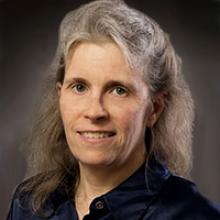Professor of Ceramic Science & Engineering Director at Penn State; Director, W. M. Keck Smart Materials Integration Laboratory

The Trolier-McKinstry group research primarily revolves around thin film dielectric and piezoelectric materials. The group works both to probe the fundamental mechanisms that control the magnitude of the achievable properties and to integrate new materials into devices.
Talk Title:
Energy harvesting with piezoelectric films
Talk Abstract:
"Harvesting energy from ambient motion using piezoelectric elements is a promising approach to extend the working hours of electronic devices, including wearables, without recharging or replacing batteries. This talk will describe the factors that are used to select thin films for this application, as well as practical implementation of mechanical designs for energy harvesting. Of particular note in materials selection is the energy harvesting figure of merit; for thin film bimorphs this typically corresponds to the product of the charge and voltage piezoelectric coefficients. Appropriate design of domain structure can be used to significantly increase the figure of merit (by up to a factor of ten), though this can constrain the substrate choice.
For applications for the internet of things, resonant energy sources are available, and resonant energy harvesters can be designed. Key parameters in the design are 1) efficiently straining the piezoelectric, while insuring that the material does not exceed elastic limits, 2) tailoring the output voltage to practical levels for the electronics system, 3) matching the resonant frequencies, 4) choosing the optimum electrical loading conditions, and 5) increasing the volume of the piezoelectric. Towards this end, it will be shown that thick piezoelectric films incorporated into devices such as the compliant mechanism harvester significantly outperform (by 5- 55 times) cantilever-based devices. {001} oriented PZT thin films on flexible Ni foil are an excellent candidate for this application.
For scavenging energy from human motion, typical designs for resonant piezoelectric energy harvesters are not suitable to extract electrical energy. Thus, non-resonant piezoelectric energy harvesters such as frequency-up conversion design have been proposed for wearable harvesters. A specific example will be provided of bimorph PZT films sputtered at 550 ~ 585 °C with 10% Pb excess Pb(Zr0.52,Ti0.48)O3 target using an rf power of 88 Watt onto {001} PZT seeded LaNiO3/HfO2/Ni foils. Strong {001} orientation of the PT films was confirmed by X-ray diffraction. Both PZT films were dense with columnar grains. Following growth of thick PZT film by high temperature sputtering, one CSD PZT capping layer was used to decrease surface roughness. The PZT films had low dielectric permittivity values near 450, with low loss tangents < 0.04 at 10 kHz. Highly {001} oriented PZT films show well-saturated PE hysteresis loops with large remanent polarization (42 μC/cm2) at 100 Hz. The performance of in-plane plucking designed piezoelectric energy harvester using six rectangular piezoelectric beams will be described. Power levels of >120 μW for running are extrapolated for a wrist-watch size device."
